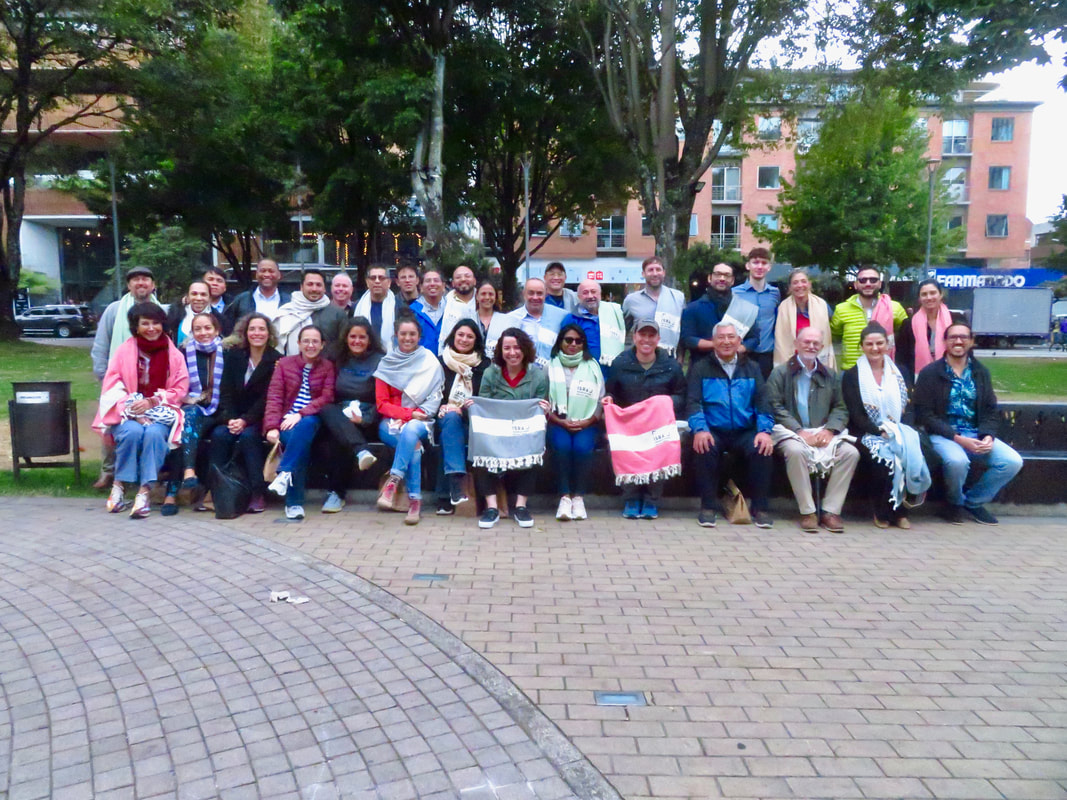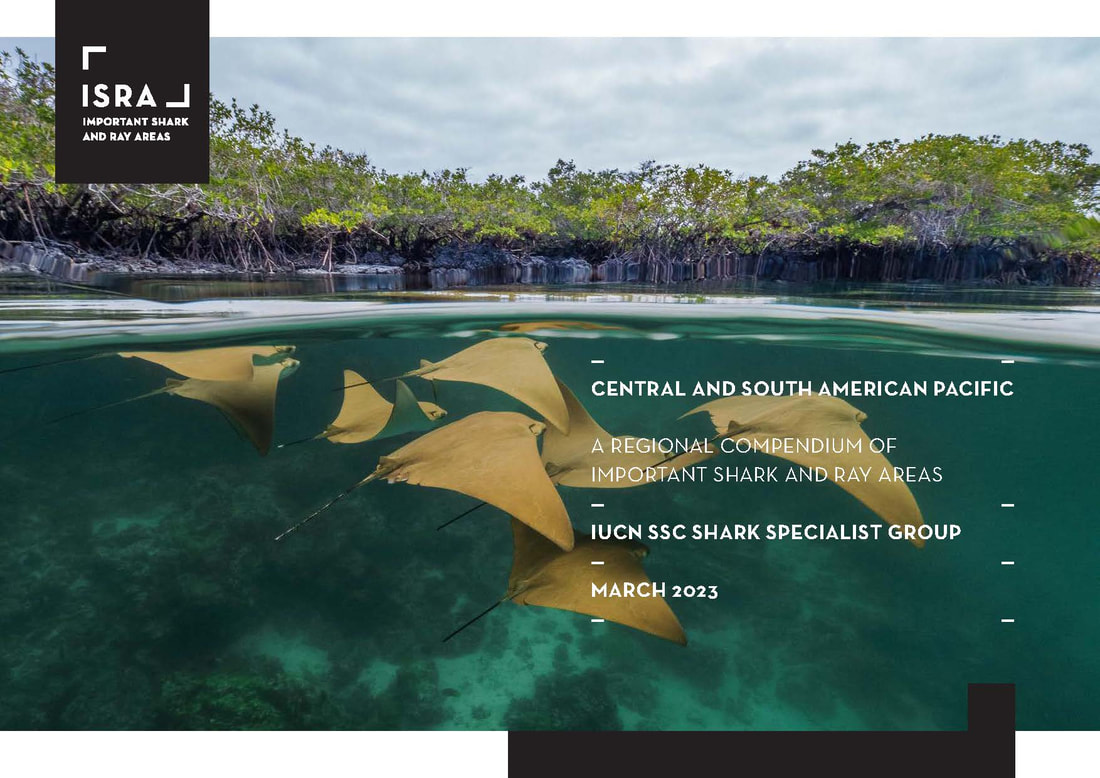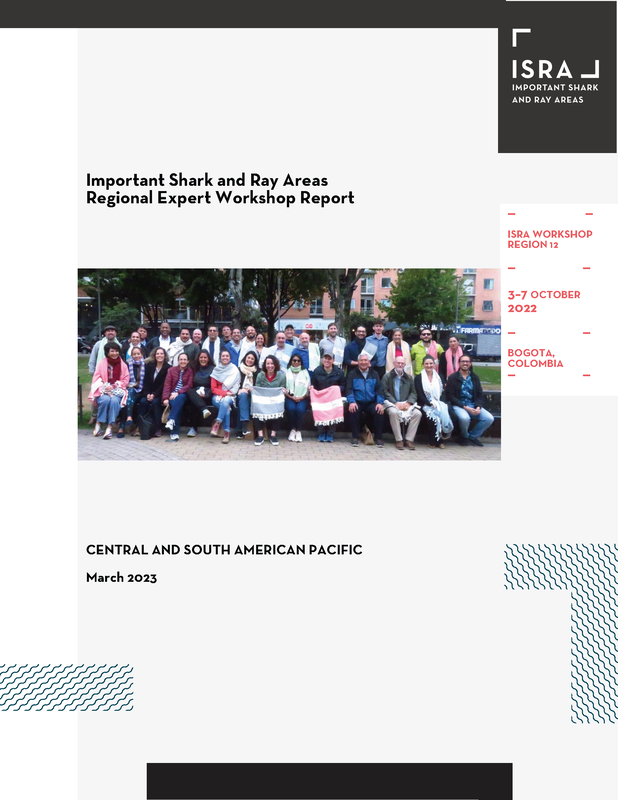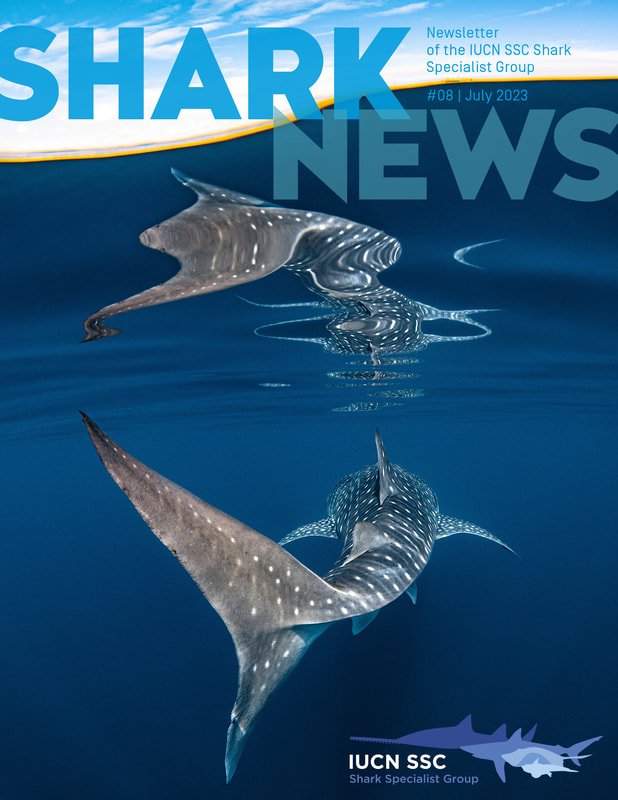From | Shark News Issue 08 Written by | Ryan Charles «The first Important Shark and Ray Areas (ISRA) regional expert workshop was held in hybrid mode (in person and online) in Bogotá, Colombia from 3–7 October 2022. The goal was to identify and delineate three dimensional and discrete portions of habitat that are critical to the survival of sharks, rays, and chimaeras, and that have the potential to be managed for conservation. The region covered was the Central and South American Pacific, from the Gulf of California in Mexico to southern Chile. This scientific collaboration amongst regional and global experts resulted in the identification of 65 Important Shark and Ray Areas, 5 candidate ISRAs, and 11 Areas of Interest. Identified ISRAs range in size from small underwater areas of 1.59 km2 at depths of 1,650–1,700 m (Northern Galápagos Hydrothermal Vents ISRA) to large areas of 3,191,603 km2 (Eastern Tropical Pacific Marine Corridor ISRA) from surface waters to a depth of 1,928 m. This compendium provides an overview of all areas delineated. The very first ISRA were successfully identified: 65 in total! In addition, five areas remained as candidate ISRA as there is ongoing investigation to ensure additional information can be collected to support their delineation as ISRAs. Also, 11 Areas of Interest were identified for future investigation. All the countries within this region were successfully represented with at least one ISRA identified in each. Every ISRA is mapped on the ISRA e-Atlas, which was launched at the 5th International Marine Protected Areas Congress held in Vancouver, Canada and shared at the Convention on Migratory Species of Wild Animals Sharks Memorandum of Understanding Meeting of Signatories (MOS4) held in Bonn in February. Each area has a unique factsheet which includes a map of the spatial boundaries and details of which ISRA Criteria are met. The associated species and geographic information are also provided. All factsheet summaries can be found in the recently published compendium entitled ‘Central and South American Pacific: A Regional Compendium of Important Shark and Ray Areas’. This is free to download from the ISRA website (sharkrayareas.org). This serves the purpose of simply sharing the importance of each area with everyone, including scientists, policy makers, and the general public. The size of the areas in this region also varied greatly, as there are small areas (less than 2 square kilometres) to large transboundary areas (over 3 million square kilometres).»
Comments are closed.
|
Archives
May 2024
Categories
All
|




